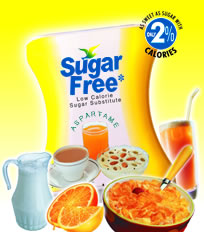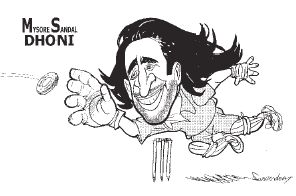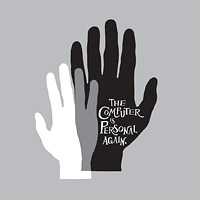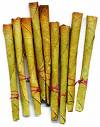Company: Zydus Cadilla
Agency : Rediffusion
Brand Count : 150
Sugarfree is the market leader in the emerging category of Sugar substitutes. The sugar substitute market in India is estimated to be of R s 60 crore growing at 15%. The market is expected to grow even faster because of the changing lifestyle of Indian elite. Sugarfree has around 70% market share in this segment.
s 60 crore growing at 15%. The market is expected to grow even faster because of the changing lifestyle of Indian elite. Sugarfree has around 70% market share in this segment.
The category will be of interest to marketing practitioners because of its potential. Primarily marketed as a sugar substitute for diabetic patients and diabetic prone middleaged Indians, the market is witnessing a change in the positioning of this products.
The major players in this markets are Sugarfree, Equal and the new aggressive entrant Zero from Alembic. These products are now targeted at the more " Proactive " consumers who are health conscious and non diabetic. This is a risk that the marketers are taking. The rationale is that these proactive consumers have seen their friends and relatives suffering from the consequences of diabetics . Hence will be looking for options to substitute sugar in their daily diet. Hence the product is positioned as a substitute for sugar ( to a certain extent). The rationale behind this positioning is to create a positive image about this category. If these brands are marketed as sugar substitute for diabetic patients, the consumers will hesitant to publicly buy this product. But when these products are marketed as a healthy option to stay fit, there is a positive perception towards this category.
The segmentation for this category will be SEC A1-A2 aged between 30-40. Although marketing campaigns are trying to position this as a healthy alternative to sugar, I feel that the actual buyers will be those who have been diagnosed with diabetics or youth in the risk category who have diabetic parents .
Since this product category is new, the task of the marketers are manifold. The consumers has to be educated about this product. Since the TG is not diabetic patients, the task is more difficult because the competition will be with ordinaryl sugar. Another task is to make the consumer to try the product. Then comes the price, these products are priced at a premium and hence it will be a tough task to convince the value conscious Indian consumer.
Should you spent so much money in repositioning this category away from diabetic patients? The reason for this question lies in the fact that India will have large number of diabetic patients owing to the changing psychographics. It takes minimum effort to convince the diabetic patients to take this product .( I am not sure whether diabetic patients can take this product, correct me if I am mistaken). I feel that there is a good market for a brand that targets this diabetic patients rather than beating around the bush and spending hell lot of money on repositioning. Hence " Enjoy life with Diabetics " will sell more than " freedom from calories".
Sugarfree has the ingredient of Aspartame which is a low calorie sugar substitute. The competitor Zero is having sucrose based sugar substitute.Sugarfree has recently ran into trouble because of some health issues regarding its ingredient Aspartame.
Sugarfree is positioned on its " Low Calorie" attribute and the campaigns promote this brand as a healthy option for consumers who have less time for exercise and targeting mainly at the SEC A category. Lack of product awareness and high price will limit this product category to a niche ( a profitable one) .
Source: agencyfaqs,timesfood,businessline
 s 60 crore growing at 15%. The market is expected to grow even faster because of the changing lifestyle of Indian elite. Sugarfree has around 70% market share in this segment.
s 60 crore growing at 15%. The market is expected to grow even faster because of the changing lifestyle of Indian elite. Sugarfree has around 70% market share in this segment.The category will be of interest to marketing practitioners because of its potential. Primarily marketed as a sugar substitute for diabetic patients and diabetic prone middleaged Indians, the market is witnessing a change in the positioning of this products.
The major players in this markets are Sugarfree, Equal and the new aggressive entrant Zero from Alembic. These products are now targeted at the more " Proactive " consumers who are health conscious and non diabetic. This is a risk that the marketers are taking. The rationale is that these proactive consumers have seen their friends and relatives suffering from the consequences of diabetics . Hence will be looking for options to substitute sugar in their daily diet. Hence the product is positioned as a substitute for sugar ( to a certain extent). The rationale behind this positioning is to create a positive image about this category. If these brands are marketed as sugar substitute for diabetic patients, the consumers will hesitant to publicly buy this product. But when these products are marketed as a healthy option to stay fit, there is a positive perception towards this category.
The segmentation for this category will be SEC A1-A2 aged between 30-40. Although marketing campaigns are trying to position this as a healthy alternative to sugar, I feel that the actual buyers will be those who have been diagnosed with diabetics or youth in the risk category who have diabetic parents .
Since this product category is new, the task of the marketers are manifold. The consumers has to be educated about this product. Since the TG is not diabetic patients, the task is more difficult because the competition will be with ordinaryl sugar. Another task is to make the consumer to try the product. Then comes the price, these products are priced at a premium and hence it will be a tough task to convince the value conscious Indian consumer.
Should you spent so much money in repositioning this category away from diabetic patients? The reason for this question lies in the fact that India will have large number of diabetic patients owing to the changing psychographics. It takes minimum effort to convince the diabetic patients to take this product .( I am not sure whether diabetic patients can take this product, correct me if I am mistaken). I feel that there is a good market for a brand that targets this diabetic patients rather than beating around the bush and spending hell lot of money on repositioning. Hence " Enjoy life with Diabetics " will sell more than " freedom from calories".
Sugarfree has the ingredient of Aspartame which is a low calorie sugar substitute. The competitor Zero is having sucrose based sugar substitute.Sugarfree has recently ran into trouble because of some health issues regarding its ingredient Aspartame.
Sugarfree is positioned on its " Low Calorie" attribute and the campaigns promote this brand as a healthy option for consumers who have less time for exercise and targeting mainly at the SEC A category. Lack of product awareness and high price will limit this product category to a niche ( a profitable one) .
Source: agencyfaqs,timesfood,businessline









